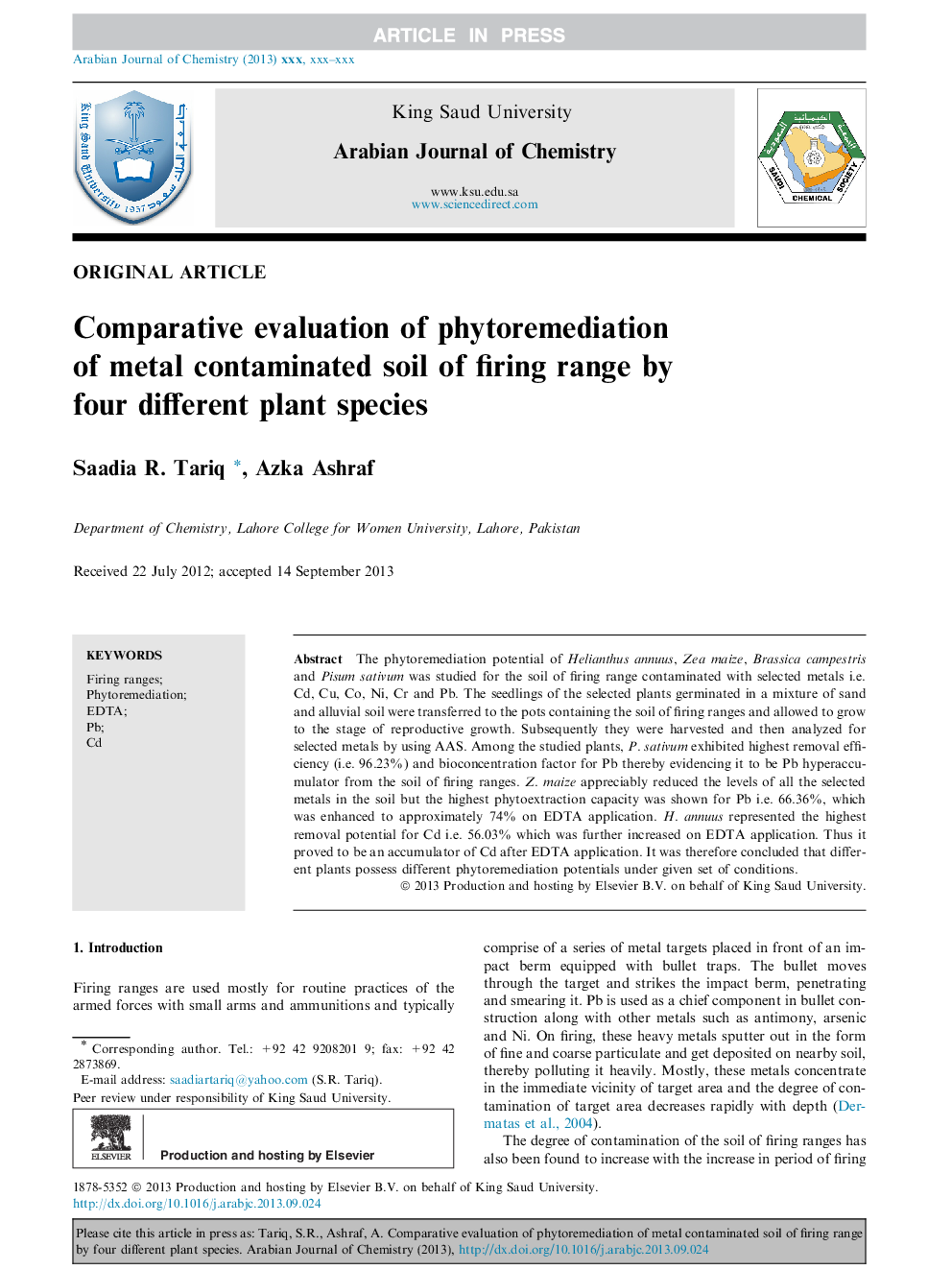| Article ID | Journal | Published Year | Pages | File Type |
|---|---|---|---|---|
| 5142435 | Arabian Journal of Chemistry | 2016 | 9 Pages |
Abstract
The phytoremediation potential of Helianthus annuus, Zea maize, Brassica campestris and Pisum sativum was studied for the soil of firing range contaminated with selected metals i.e. Cd, Cu, Co, Ni, Cr and Pb. The seedlings of the selected plants germinated in a mixture of sand and alluvial soil were transferred to the pots containing the soil of firing ranges and allowed to grow to the stage of reproductive growth. Subsequently they were harvested and then analyzed for selected metals by using AAS. Among the studied plants, P. sativum exhibited highest removal efficiency (i.e. 96.23%) and bioconcentration factor for Pb thereby evidencing it to be Pb hyperaccumulator from the soil of firing ranges. Z. maize appreciably reduced the levels of all the selected metals in the soil but the highest phytoextraction capacity was shown for Pb i.e. 66.36%, which was enhanced to approximately 74% on EDTA application. H. annuus represented the highest removal potential for Cd i.e. 56.03% which was further increased on EDTA application. Thus it proved to be an accumulator of Cd after EDTA application. It was therefore concluded that different plants possess different phytoremediation potentials under given set of conditions.
Keywords
Related Topics
Physical Sciences and Engineering
Chemistry
Chemistry (General)
Authors
Saadia R. Tariq, Azka Ashraf,
